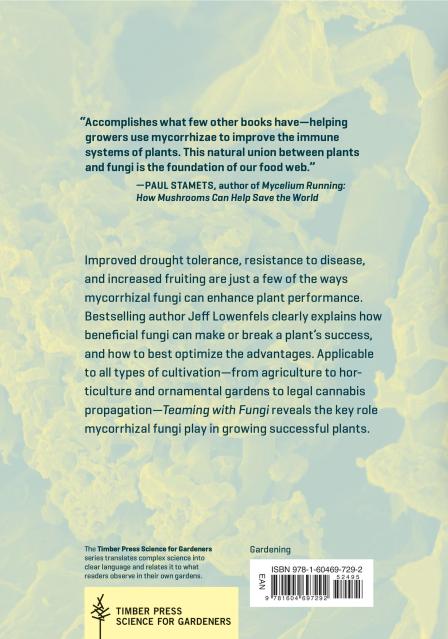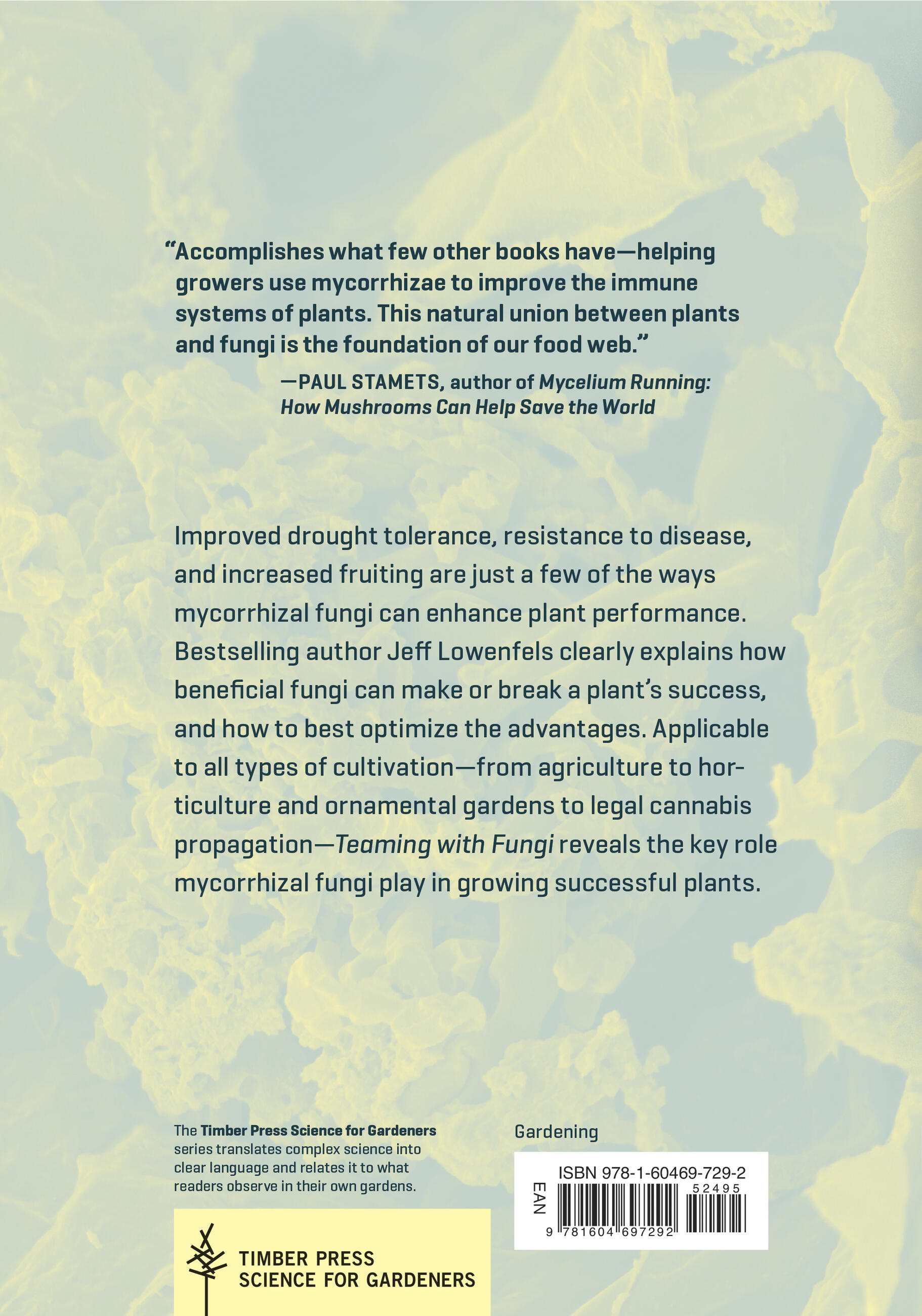Promotion
25% off sitewide. Make sure to order by 11:59am, 12/12 for holiday delivery! Code BEST25 automatically applied at checkout!
By clicking “Accept,” you agree to the use of cookies and similar technologies on your device as set forth in our Cookie Policy and our Privacy Policy. Please note that certain cookies are essential for this website to function properly and do not require user consent to be deployed.
Teaming with Fungi
The Organic Grower's Guide to Mycorrhizae
Contributors
Formats and Prices
- On Sale
- Jan 11, 2017
- Page Count
- 172 pages
- Publisher
- Timber Press
- ISBN-13
- 9781604697292
Price
$24.95Price
$30.95 CADFormat
Format:
- Hardcover $24.95 $30.95 CAD
- ebook $11.99 $15.99 CAD
This item is a preorder. Your payment method will be charged immediately, and the product is expected to ship on or around January 11, 2017. This date is subject to change due to shipping delays beyond our control.
Buy from Other Retailers:
Teaming with Fungi is an important guide to mycorrhizae and the role they play in agriculture, horticulture, and hydroponics. Almost every plant in a garden forms a relationship with fungi, and many plants would not exist without their fungal partners. By better understanding this relationship, home gardeners can take advantage of the benefits of fungi, which include an increased uptake in nutrients, resistance to drought, earlier fruiting, and more. This must-have guide will teach you how fungi interact with plants and how to best to employ them in your home garden.
Genre:
-
“Accomplishes what few other books have—helping growers use mycorrhizae to improve the immune systems of plants. This natural union between plants and fungi is the foundation of our food web.” —Paul Stamets, author of Mycelium Running: How Mushrooms Can Help Save the WorldThe Daily Inter Lake
“A thorough yet accessible look at mycorrhizal fungi and their critical role in plant health and survival. . . . I recommend this book for the intermediate to advanced gardener, and certainly for anyone who grows plants professionally.” I>The American Gardener
“Does much to bring the concept to light.” I>Choice
“This small but mighty guide. . . translates complex science into clear language to enhance your knowledge of your garden soil.” I>Michigan Gardener
“At the end of this book, you will have all the knowledge you need to make your own inoculants and predict how they will benefit your crop, lawn, or garden.” I>The Gardener
“To say [Lowenfels] thinks deeply about this subterranean world [of soil] is an understatement.” I>Hamodia
“Teaming With Fungi helpfully demonstrates just how to apply the core principles of the mycorrhizal fungi process to produce healthier, hardier, happier Cannabis plants.” I>The Northwest Leaf
“The third great microbe title of Lowenfels' organic gardener's earthy trilogy.”
Newsletter Signup
By clicking ‘Sign Up,’ I acknowledge that I have read and agree to Hachette Book Group’s Privacy Policy and Terms of Use





















